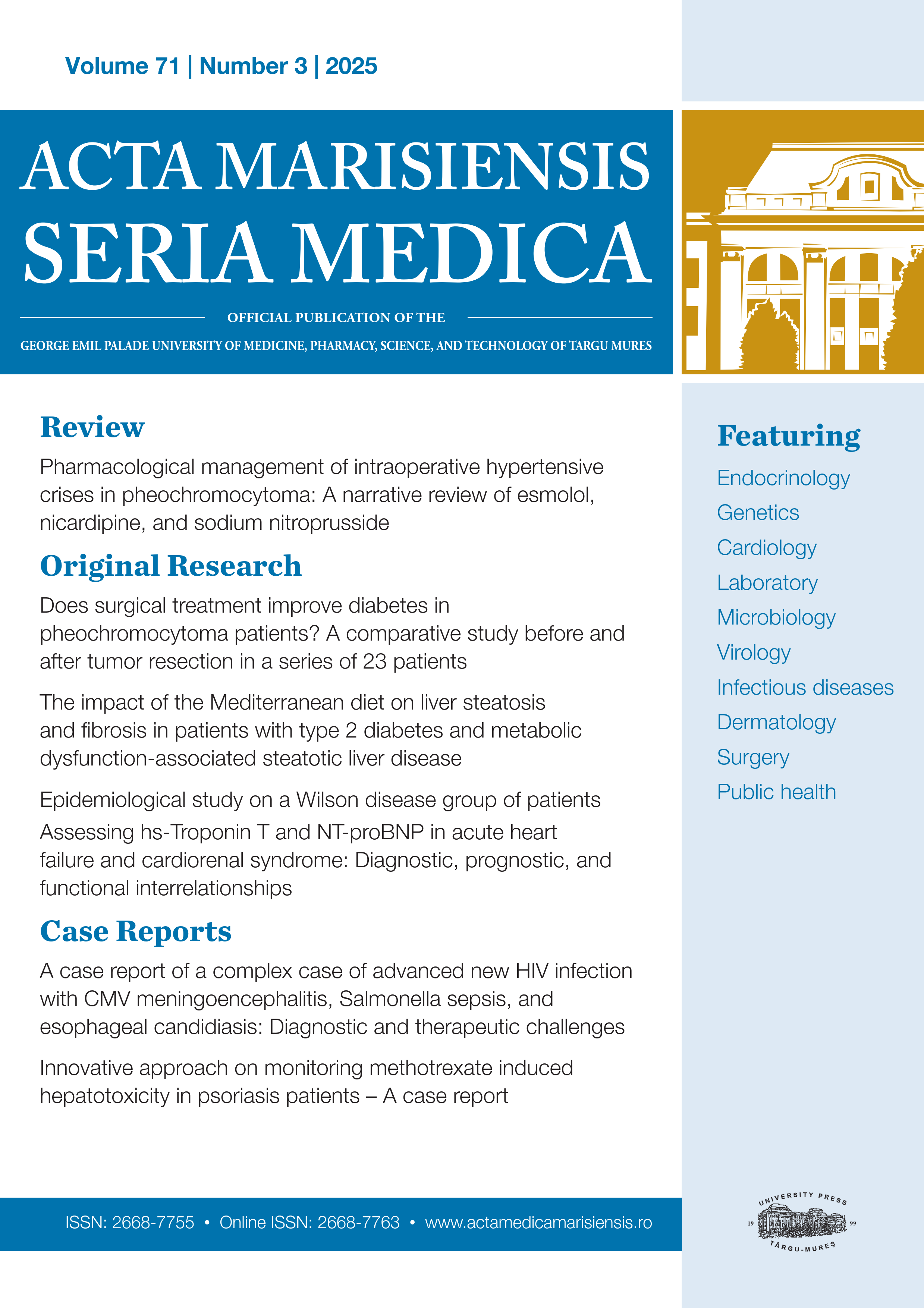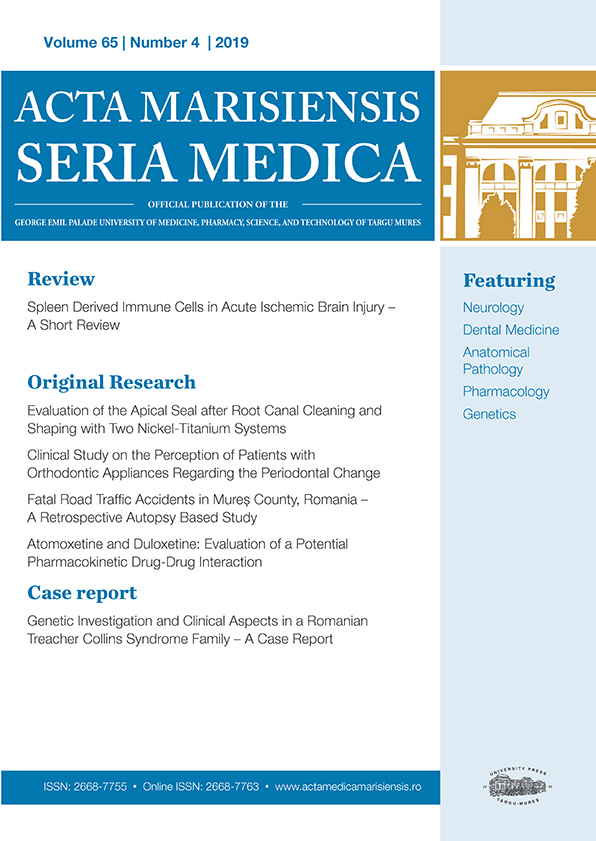Correlation between HBV viral load and other paraclinical parameters in patients with chronic hepatitis B
Abstract
Background
Hepatitis B virus (HBV) infections cause approximately 1.2 million deaths yearly, mainly due to complications such as hepatocellular carcinoma and cirrhosis. The key marker used to monitor HBV viraemia and guide treatment is the viral load, often unavailable in resource-limited settings. This study aimed to find surrogate markers predicting hepatitis viral activity, valuable in areas with limited access to molecular diagnostics.
Methods
A retrospective observational study of 178 chronic hepatitis B patients was conducted at Târgu Mureș Clinical County Hospital between April 2022 and April 2025. The dataset included demographic data, hepatitis B viral load, serological viral markers, blood counts, liver function tests and coagulation parameters. Exclusion criteria consisted of duplicate samples, as well as those with detectable viral loads but missing laboratory determinations. Univariable logistic regression assessed associations between the abnormal serological parameters and the odds of viral DNA detectability.
Results
Out of 218 samples tested for hepatitis B viral load, 178 were included in the final analysis. Detectable viral DNA was found in 64 (35.96%) patients. Viral load positivity was significantly associated with positive HBsAg (OR = 41.7, 95% CI: 5.50-315.70, p<0.0001), elevated AST levels (OR = 2.46, 95% CI:1.23-4.92, p=0.01), and negative HBeAb (OR = 0.3, 95% CI: 0.09-0.94, p=0.04). Other tested associations were not statistically significant.
Conclusion
HBsAg, HBeAb, and AST were significantly associated with hepatitis B DNA detectability, highlighting their potential use in settings lacking molecular assays. Further research with larger cohorts may help identify accessible predictors of viral replication and disease progression.
Copyright (c) 2025 Silvia Donica, Cristina Nicoleta Ciurea, Mihaela Alexandra Budianu, Anca Cighir, Razvan Lucian Coșeriu, Alexandrina Maria Bunea, Adrian Man

This work is licensed under a Creative Commons Attribution 4.0 International License.









